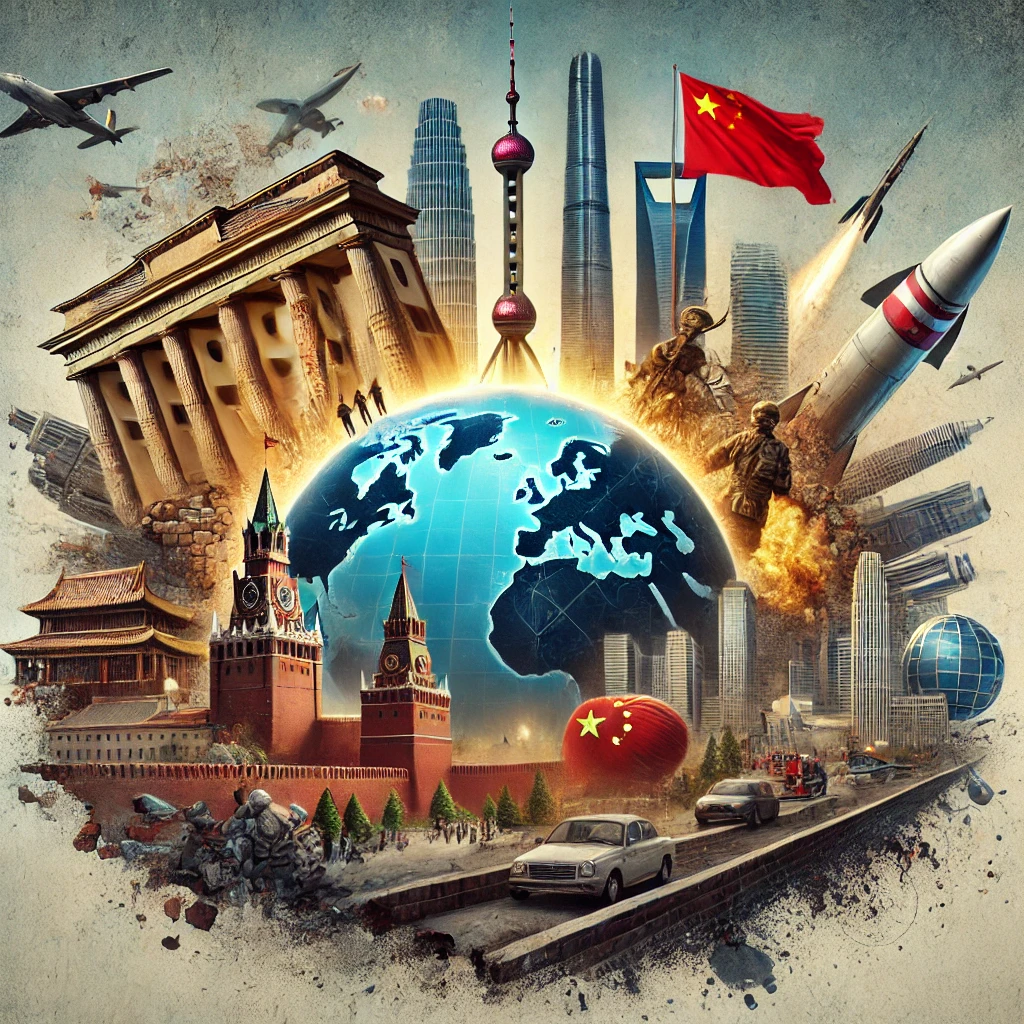Introduction
World War II was not just a military conflict—it was a turning point that reshaped global power structures, economies, and alliances. In its aftermath, the world saw the emergence of the United States and the Soviet Union as superpowers, the creation of the United Nations, and the birth of institutions like the IMF and World Bank, designed to steer global economic policy.
But where are we today? The post-WWII order is unraveling, multipolarity is rising, and global power struggles are intensifying. To understand what’s happening now, we need to examine how we got here.
The Post-WWII Global Order (1945-1991)
1. The Rise of the U.S. and the Soviet Union
- The United States emerged as an industrial and financial powerhouse, setting up the Bretton Woods system, where the U.S. dollar became the world’s reserve currency.
- The Soviet Union, meanwhile, expanded its influence across Eastern Europe, leading to the Cold War—an ideological and geopolitical struggle between capitalism and communism.
- The Marshall Plan rebuilt Europe with U.S. funds, ensuring Western Europe remained under American influence, while the Soviets established the Warsaw Pact to counter NATO.
2. The Cold War and Proxy Conflicts
- Instead of direct war, the U.S. and USSR fought through proxy wars: Korea (1950-1953), Vietnam (1955-1975), Afghanistan (1979-1989).
- The Cuban Missile Crisis (1962) brought the world close to nuclear war but resulted in a fragile détente.
- The arms race led to technological advancements, including space exploration (Sputnik, Apollo program).
3. The Fall of the Soviet Union (1991) and U.S. Unipolarity
- The Berlin Wall fell in 1989, and two years later, the Soviet Union collapsed, marking the end of the Cold War.
- The U.S. became the undisputed global superpower, expanding NATO and influencing global markets under the banner of globalization and neoliberalism.
The Rise of the Multipolar World (1991-Present)
1. U.S. Hegemony and its Challenges
- The 1990s and early 2000s saw the U.S. flex its global power through military interventions: Iraq (1991, 2003), Afghanistan (2001), Libya (2011), Syria (2014).
- However, China’s rapid industrialization and Russia’s resurgence under Putin began challenging U.S. dominance.
- The 2008 financial crisis exposed weaknesses in Western financial systems and led to growing disillusionment with globalization.
2. The Shift Toward Multipolarity
- China became the world’s second-largest economy, investing in global infrastructure through the Belt and Road Initiative (BRI).
- Russia, under Putin, pushed back against NATO expansion, leading to the 2014 annexation of Crimea and, later, the Ukraine conflict (2022-present).
- The BRICS (Brazil, Russia, India, China, South Africa) bloc expanded, offering an alternative to Western institutions like the IMF.
- U.S. influence in the Middle East waned, while China brokered peace deals, and Gulf states diversified their partnerships.
3. Today’s Geopolitical Struggle: The West vs. the Rest
- The West (U.S., EU, NATO allies) is trying to maintain its post-WWII dominance.
- The East (China, Russia, BRICS nations) is creating an alternative global order, challenging the dollar, and reshaping global trade.
- AI, automation, and economic shifts are upending traditional industries, while ideological battles over sovereignty vs. global governance intensify.
Where Are We Headed?
The world is at an inflection point. The old order is cracking, but the new system is still forming. Questions remain:
- Will the U.S. and its allies adapt, or will they escalate conflicts to maintain control?
- Will the dollar-based financial system collapse under the weight of debt and de-dollarization efforts?
- Will AI and automation redefine global labor and economies, or will it deepen inequality?
- Will smaller nations find sovereignty in multipolarity, or will corporate and elite control tighten?
One thing is clear: the post-WWII world is ending, and a new reality is taking shape. Those who recognize these shifts early will be best positioned to navigate the uncertainty ahead.
Conclusion
The world has come full circle—from post-war reconstruction, Cold War struggles, and U.S. unipolarity to the emergence of new power centers challenging the status quo. As the geopolitical chessboard continues to shift, understanding these historical patterns is crucial for predicting the next moves.
SovereignIntel.Network will continue to analyze, inform, and challenge narratives—because if you don’t understand the game, you’re just a pawn.

